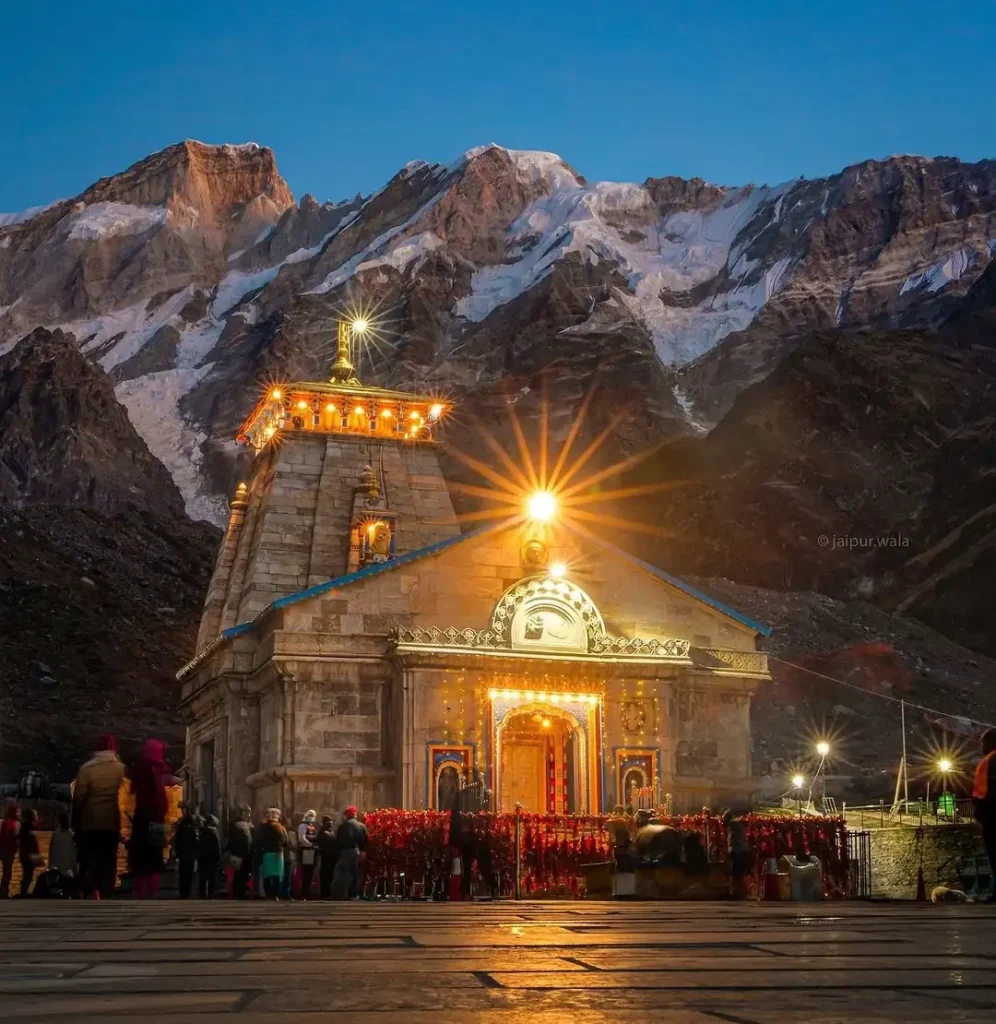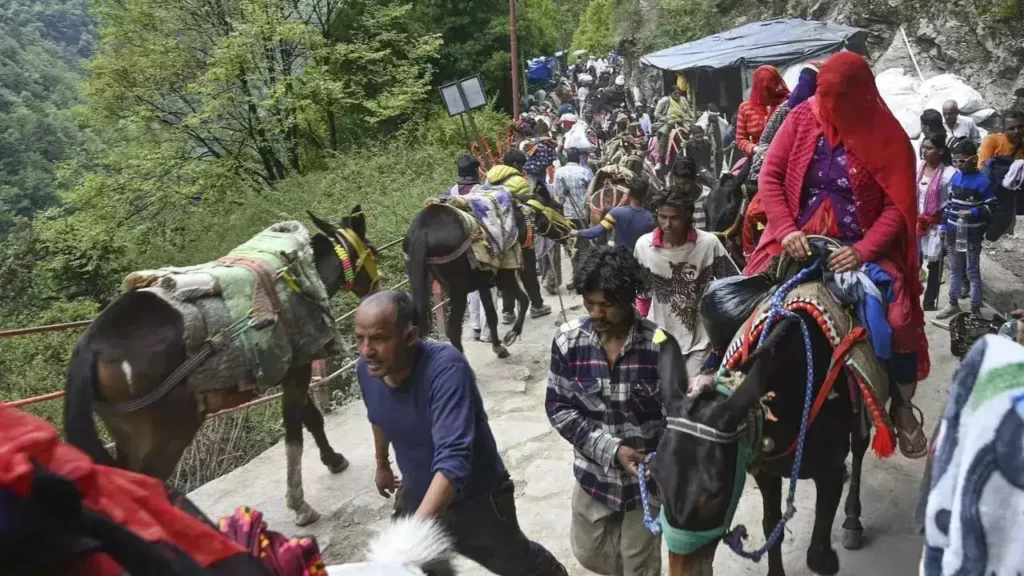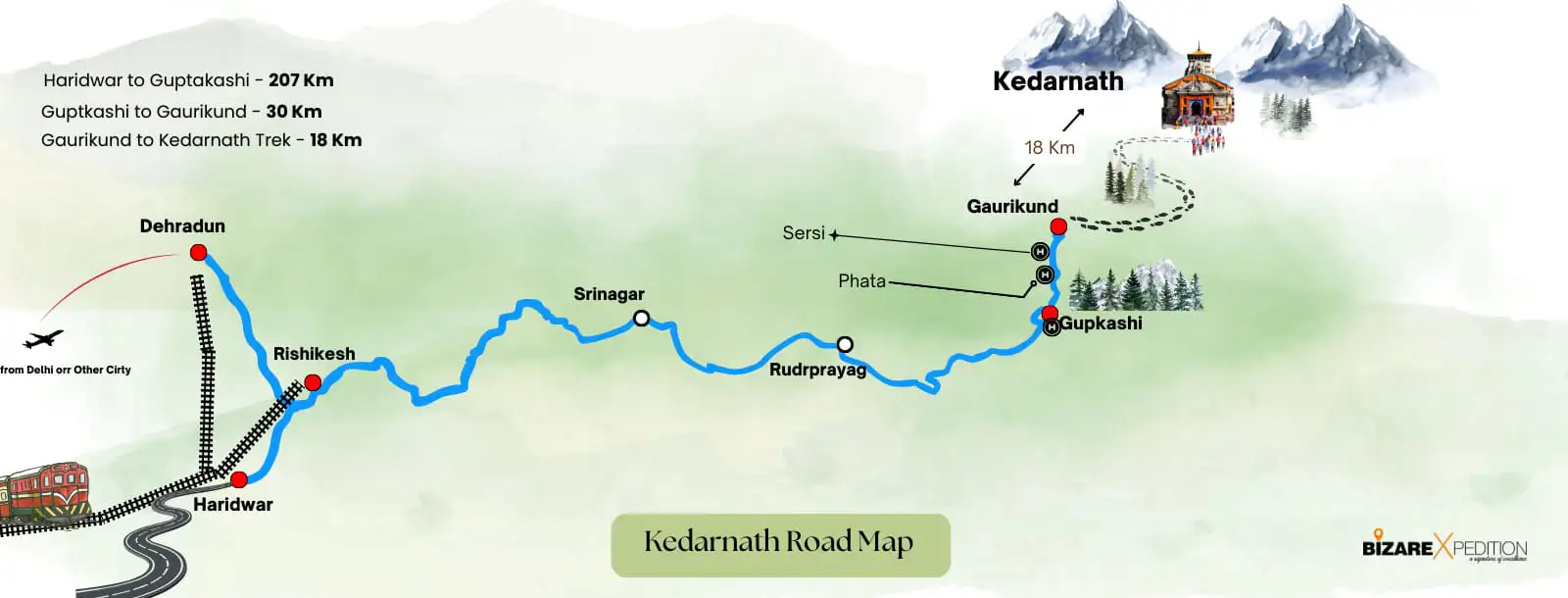Animal Deaths Lead to 24-Hour Ban on Horses and Mules During Kedarnath Yatra; Officials Begin Probe

Authorities imposed a 24-hour ban on horses and mules during the Kedarnath Yatra after multiple animals died along the pilgrimage route. The ban aims to address urgent animal welfare concerns and give officials time to investigate the cause of the deaths.
The incident occurred just days after the annual pilgrimage to the Kedarnath temple began on May 2. Officials received reports that several animals collapsed and died on the steep trek, possibly due to overwork, exhaustion, or dehydration.
Baba Kedarnath’s Idol Reaches Temple Before Opening
On May 1, temple caretakers carried the idol of Baba Kedarnath to the shrine from its winter home in Ukhimath. The temple opened its doors to pilgrims on the morning of May 2, attracting thousands of devotees eager to start their spiritual journey.
The Kedarnath temple, located at over 11,700 feet in the Garhwal Himalayas, is one of the most important Char Dham pilgrimage sites. Pilgrims must trek nearly 16 kilometers from Gaurikund to reach the temple, often relying on horses or mules to make the journey easier.
Animal Deaths Raise Serious Concerns
This year, distressing reports of animal deaths surfaced just after the Yatra began. While the exact number remains unclear, sources confirmed that several animals collapsed on the route. Animal rights groups and local observers believe that overloading, fatigue, and poor weather may have played a role.

Every year, horses and mules carry thousands of pilgrims and their luggage up the treacherous path. Many of these animals work long hours with little rest, often under harsh conditions. Despite previous warnings from activists, many handlers still push their animals to extreme limits.
To prevent further deaths and provide immediate care, the district administration temporarily halted the use of animals on the trail. During this pause, officials began health inspections and collected reports from the ground.
Officials Begin Investigation
Rudraprayag district officials launched a formal investigation to determine the exact cause of the deaths. Veterinary teams started examining the animals still working on the trail, while authorities also collected statements from handlers and Yatra organizers.
“We’re treating this matter with high priority,” said a senior district officer. “We will take strict action if we find evidence of negligence or mistreatment.”
The investigation also includes reviewing the condition of the route, workload distribution, and availability of rest stops and water for the animals.
Trekking Route Challenges Animals and Pilgrims Alike

The Kedarnath trail is known for its rocky terrain, steep inclines, and unpredictable weather. Both pilgrims and pack animals face difficult conditions during the journey. While authorities have improved the infrastructure over the years, the animals still face long working hours with limited veterinary support.
Many animal welfare advocates have repeatedly called for better protection of working animals during the Yatra season. They suggest limiting daily loads, mandating rest breaks, and ensuring regular health checks before allowing animals onto the trail.
Authorities Announce Safety Measures
In response to the incident, the Uttarakhand government has announced several measures to protect animals. These include:

- Mandatory health screenings for animals before starting the journey
- Strict limits on the loads animals can carry
- Scheduled rest breaks during the trek
- More veterinary staff deployed along the route
- Training programs for handlers to improve animal care
- Exploring alternatives like battery-operated carts or palanquins
Officials also appealed to pilgrims to treat animals with kindness and choose humane options whenever possible.
Public and Local Reactions
The temporary ban sparked mixed reactions. Many pilgrims supported the move, saying the animals deserve better treatment. Others expressed concern about how those unable to walk the trail would continue their journey.

“I understand the concern for the animals,” said Rajesh Sharma, a pilgrim from Haryana. “But I hope the government can provide alternative options for people like my parents who can’t walk the full distance.”
Local residents, who rely on the Yatra season for income through horse and mule services, worry about the economic impact. The government assured them that services would resume once they confirmed the animals were healthy and conditions safe.
A Call for Ethical Pilgrimage
The deaths of animals during the Yatra have reignited discussions about ethical pilgrimage practices. Many believe that spiritual journeys should not come at the cost of animal suffering.
As the pilgrimage continues, both officials and devotees must act with greater awareness and compassion. Protecting the animals who support the journey is not just a logistical concern—it is a moral responsibility.
If authorities enforce the new measures and pilgrims remain mindful of animal welfare, the Kedarnath Yatra can continue in a more respectful and humane manner for all involved.






